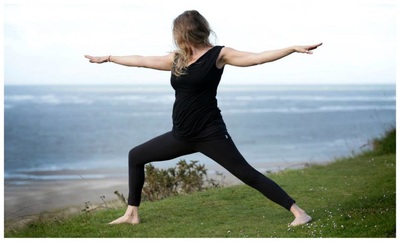There are so many different styles of Yoga that sometimes choosing a class can be quite confusing, especially if you are new to yoga, so here’s a little information about Yoga's original style...
Hatha Yoga really refers to any yoga that teaches physical postures (asanas) and so covers most of today’s Western yoga classes. Which adds to the confusion! Ashtanga, Vinyasa and Iyengar are among the many variations that have developed from Hatha yoga.
The Sanskrit word Hatha translates as ‘effort’, ‘exertion’ or ‘force’ and refers, on the gross level, to the physical practice of the yoga asanas and moves to the more subtle level of breath work and meditation all of which require effort and perseverance.
The frequent modern reference to ‘Hatha’ translating as 'ha' = sun and 'tha' = moon, although inaccurate, probably stems from passages in the Hatha Yoga Pradipika (one of Yoga's classic texts written in the 15th century) which describes the balancing effects of the postures on the energetic systems of the body.
In general, a Hatha class will be a slower paced class with less or little flow and more attention being given to instructing correct alignment. This makes Hatha classes great places for beginners or those wanting to improve their practice giving the opportunity to learn and develop the basic postures.
This doesn’t mean it’s going to be easy, classes can still be challenging but you are unlikely to be left in such a big pool of sweat!
A Hatha class is also a good counterbalance to cardio workouts, strong Vinyasa or Ashtanga classes, and is great for runners, cyclists and anyone who works at a desk or has a tendency to get stressed out… so that’s probably pretty much the whole population then! And this is one of the other great things about attending a Hatha class; it offers time out to just sit and be when we all tend to run high speed, high stress lifestyles, which in the long run we know is not beneficial to health. This is why most Hatha classes will often include breath work (pranayama) and give a generous amount of time for relaxation or meditation at the end of the class.
There is no doubt that practicing Hatha yoga will bring more balance to your life. The purpose of the physical aspects of yoga are ultimately to prepare and enable you to meditate and quieten the fluctuations of the monkey mind. If you have practiced yoga before you will have noticed how much easier it is to sit still with your breath at the end of a class that at the beginning, having prepared the body to sit in stillness.
My classes start with a short meditation on the breath, quietening and focusing the body and mind. We then work through a sequence of asanas designed to stretch out and open up the body and its energy channels, working with the breath and movement. After the physical and mental exertion of the asanas you get to lay down and let go, the asanas having prepared the body for deep relaxation. I will never ask you to relax this will happen naturally as you are led verbally often using Yoga Nidra techniques to a deep meditative relaxation.
You will unwind physically and mentally, learn about your breath and body, release tension and relax completely.
Everyone is welcome; we have access to a variety of props so all the poses are accessible however inflexible you may feel. It is not about the finished pose but the safe journey towards it and where this journey may take you.
Hatha Yoga with Millie
Every Thursday 20.15 - 21.15




